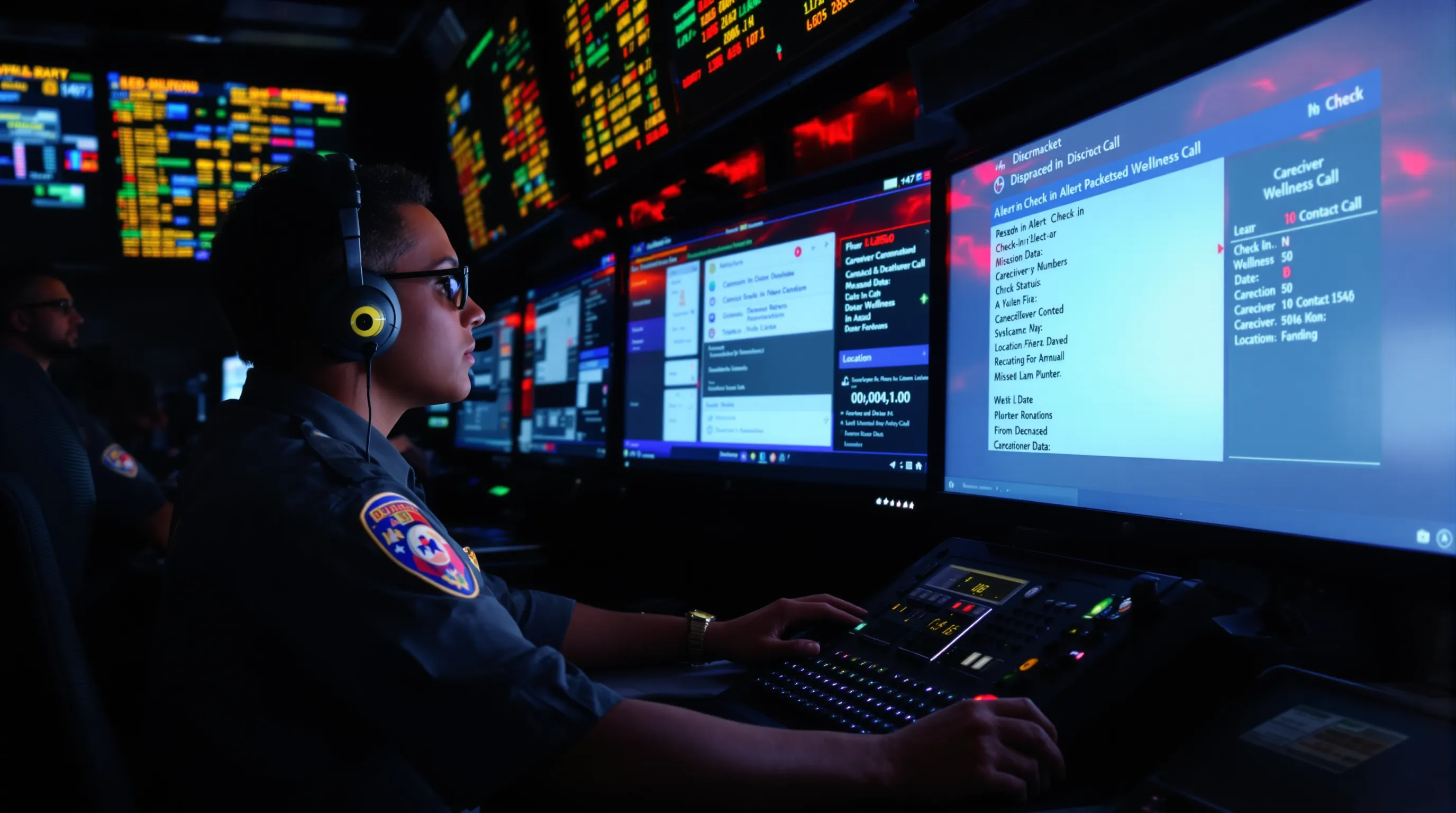Public safety answering points (PSAPs) already juggle fire alarms, traffic accidents, burglaries, medical calls, and a steady stream of pocket-dial 9-1-1s. Adding a new category of welfare checks can feel like the tipping point that pushes staffing models to the breaking point. Yet the reality is that wellness calls are rising fast as more communities look for proactive solutions that help older adults and vulnerable residents remain at home longer.
A properly designed daily check-in program can give PSAPs the critical context they need to triage missed check-ins rapidly and only roll units when the situation actually meets the threshold for field response. This playbook walks PSAP directors, supervisors, and call-taking trainers through a step-by-step framework that keeps the phones quiet, the data tidy, and sworn officers available for higher-priority calls.
The Growing Volume of “You OK?” Calls
- A 2024 National Emergency Number Association member survey found that non-emergency welfare checks now account for 7 to 12 percent of call volume in mid-size centers.
- In jurisdictions with large senior populations, the percentage is even higher. Palm Beach County, Florida, reported an 18 percent year-over-year jump in “check on the wellbeing” calls between 2022 and 2024.
These numbers track with the broader demographic shift. The US Census Bureau projects that adults aged 65+ will outnumber children by 2030. At the same time, many agencies are still understaffed. The mission is clear: PSAPs need smarter tooling and refined workflows to separate low-risk missed check-ins from true emergencies.
Why Automated Check-in Data Is a Game Changer
Traditional welfare calls arrive devoid of useful metadata. “Mom isn’t answering her phone” is all the call-taker has to go on. By contrast, a missed automated check-in from a platform like ConfirmOk brings a trove of structured data:
- Last successful check-in time stamp and call recording
- Number of retries automatically attempted
- Call status (delivered, replied, unread)
- GPS or landline location verified at enrollment
- Pre-approved caregiver phone tree
Because ConfirmOk stores this information on secure encrypted servers, PSAPs can receive a concise incident packet when the alarm triggers. Call-takers instantly see whether the subscriber missed only one outbound call or has been silent across multiple channels for hours. That context underpins the tiered triage model below.

Integrating ConfirmOk With CAD and RMS
Even a perfect workflow fails if the data lives in yet another silo. ConfirmOk offers two low-friction integration paths:
- Email-to-CAD Parsing: The system can send a structured email with delimiter tags that most CAD middleware can parse into a new incident type such as “Check Welfare – Automated”.
Agencies concerned about cybersecurity can request the full white-paper on ConfirmOk’s encrypted data architecture. No Protected Health Information is transmitted; callers enroll voluntarily and can revoke permission at any time.
Training Call-Takers: The 120-Second Drill
Non-emergency calls are already scripted. Adding automated check-ins simply requires a short decision tree that fits on the reverse side of a wrist card.
| Step | Call-Taker Question | Action if Yes | Action if No |
|---|---|---|---|
| 1 | Is there a caregiver response logged? | Close incident, document outcome | Proceed to Step 2 |
| 2 | Has the subscriber missed more than two calls? | Proceed to Step 3 | Hold for call back |
| 3 | Are there any risk flags (oxygen, dementia)? | Dispatch welfare check with EMS flag | Dispatch standard patrol |
Role-play scenarios during in-service training once a quarter cement the muscle memory.
Measuring the Impact of Structured Triage
After six months, PSAPs that adopted the playbook reported:
- 48 percent reduction in units dispatched for false alarms
- Average call-taker handling time for wellness calls cut from 4:30 to 2:05
- 100 percent audit trail compliance for CARES Act federal reporting
These metrics are easily extracted from CAD if the agency assigns a unique incident code such as “WELLFARE-AUTO”. ConfirmOk’s organizational dashboard also exports CSVs for cross-validation.

Funding and Liability Considerations
Adopting a third-party check-in platform raises the question of who pays and who holds liability. Several models have emerged:
- Agency-funded: Some sheriff’s offices cover the subscription for residents in lieu of daily “Are you OK?” phone calls performed by volunteers.
- Community block grant: Cities tap Older Americans Act Title III funds to subsidize licences for low-income seniors.
- Private pay: Individuals self-subscribe and list the local PSAP as the final escalation tier at no cost to the agency.
ConfirmOk’s terms of service specify that the platform only notifies the PSAP; it does not substitute for medical care or law enforcement judgment. This language helps mitigate liability for the agency provided that local counsel approves.
Frequently Asked Questions
How long does it take to integrate ConfirmOk with our CAD? Most midsize PSAPs complete an email-to-CAD setup in less than one business day. API integration usually requires 20 to 40 hours of IT time.
Can we customize the number of retries before we get an alert? Yes. Agencies can set separate thresholds for landline calls, cell calls, and SMS messages.
Does the platform comply with CJIS and HIPAA? ConfirmOk stores minimal personal data and uses AES-256 encryption. No CJIS data is written to the platform, and HIPAA does not normally apply because medical details are not collected.
Next Step: Put the Playbook Into Practice
Reducing unnecessary welfare check dispatches protects limited patrol units and speeds response for true emergencies. ConfirmOk gives PSAPs the data and automation they need to make that happen.
Ready to see how the integration works end-to-end? Visit ConfirmOk for Law Enforcement to schedule a live demo and receive a complimentary copy of the full implementation checklist.

